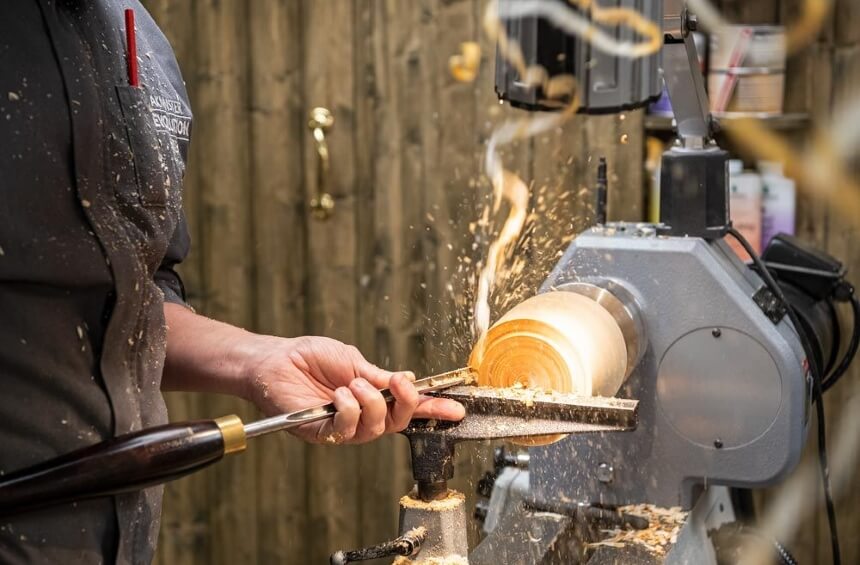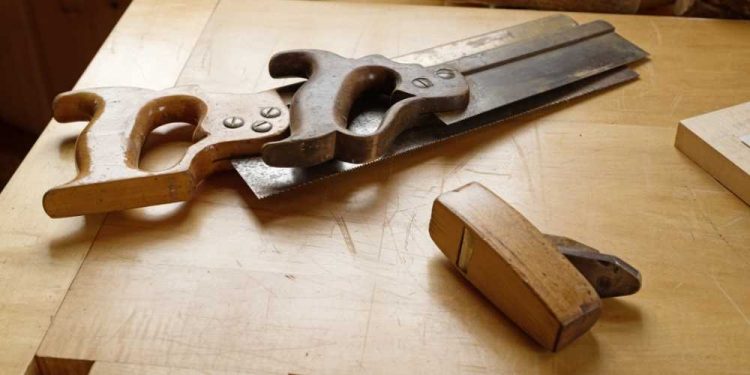Woodworking may be a hobby for some or an enjoyable pastime, but it can also become a profession.
If you plan to take up woodworking as your career, you need to know which tools are essential to the trade.
The following are five of the most important woodworking hand tools that every professional need in their workshop:
1) Hand Saw
A saw is one of the most basic and versatile pieces of equipment used by woodworkers. It is used to cut across both flat surfaces and into curved areas such as those found on furniture legs or round table tops. There are many different types of saws out there including backsaws, crosscut saws, coping saws, and rip cutting saws with each one suited to a specific purpose and used for cutting different materials.
Saws need to have an ergonomic handle and sharp teeth or blades to enable them to cut through wood. A saw can be used for both small and large scale projects so you need a number of different sizes on hand.
2) Jack Plane
Jack planes are used for removing a lot of material from a piece of wood. The blade is thicker than that found on most hand planes, and it’s long enough to provide smooth strokes along the grain regardless of the direction you are planning in.
A jack plane’s body is not adjustable which means if your cuts are coming out wavy then you have to adjust your technique. Jack planes are not often used in woodworking shops except for doing rough work and preparing surfaces before applying finishes or glues.
There are other types of planes as well such as bench planes, jointer planes, and smoothing planes. You should try to include those in your tool collection as well if pocket permits.
3) Woodturning Chisel
A chisel is an essential tool for woodturners since it is used to cut or shape wood by removing pieces from the inside of a piece of stock. This hand tool can be used instead of a saw in some instances when you don’t want to risk damaging the piece you are working on.
Woodturning chisels – like all other woodworking hand tools – have to be sharp and free of nicks and burrs for them to work properly. A dull blade will only serve to mess up the edges of your project and leave unsightly marks.
Plus, you can’t work with a type of chisel, rather you need to have a set of woodturning lathe chisels on hand so you are prepared for any type of job that may come your way.
4) Clamps
Clamps are essential for many woodworking operations including gluing, clamping the boards together before they are sawed as well as holding them in place while the glue dries. Clamps can be used to hold boards together while you drill holes before nailing them into place.
In reality, most woodworkers have numerous clamps of different sizes on hand so they are ready for any purpose. They vary in size from 1/8 inch to 2 inches and can be made of plastic or metal.
5) Bowl Gouge
Bowl gouges are crucial in woodturning since they can be used to shape the inside of bowls and other round wooden objects. There are basically two types of gouges available for woodworkers:

A roughing gouge has a steeply angled cutting edge that is best suited to shaping a bowl and they are also used in the shaping of chair seats, table legs, bowls, and even spindles. A bowl gouge is primarily meant for shaping work by removing large amounts of wood from the surface of a piece.
The blade should have an angled cutting edge so it can be used when carving an inside curve or outside curve. For the blade, you can go with either a round-shaped one or square-edged ones but make sure that it is not too dull to be effective for your projects. A sharp blade will make all the difference in how quickly and easily your bowl gouges cut through the wood while leaving smooth surfaces in their wake.
6) Marking Gauge
Marking gauge is another tool that is used to make marks on the edges of a wood piece. It consists of an adjustable gauge and usually two pins that can be inserted into a predrilled hole in the workpiece.
Marking gauges have points of different sizes so you can mark large or small measurements depending on what you are looking for. They are also handy for decorating pieces before you stain them.
7) Wooden Mallets
Wooden mallets are cheap yet useful tools to have on hand since they can help drive wooden pegs into place without damaging the wood in your project. Mallets come in different designs and sizes depending on their intended purpose.
Most woodworkers use wooden mallets to do creative work on wood pieces. These are effective in producing just enough hammering strength to do the artwork on wood without damaging the surface.
Conclusion
Woodworking hand tools are an essential part of any woodworker’s arsenal. A number of different types exist for a variety of purposes, and they can be used to reduce the amount of time spent on your project as well as improve your accuracy in cutting or shaping materials. Some examples include marking gauges, saws (including backsaws), jack planes, clamps, mallets, and more.
You should take some time to think about what you want from these tools so that you have them ready when needed. For example: if you need something quick but also accurate – like using a backsaw – then why not keep one at home? If you require more precise work because it is delicate or important-like making sure the edges are smooth and even before staining or painting – then having a set of woodturning chisels on hand will be beneficial.






